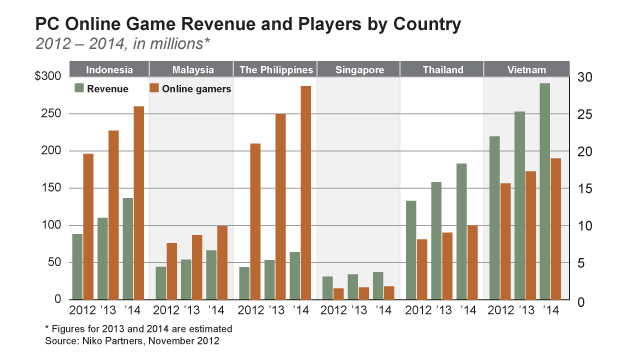Recent estimates put the number of gamers worldwide at around 1.2 billion. China and Southeast Asia are home to about 84 million of them, according to market intelligence firm, Nico Partners.

The downside is that Asia is the world leader in online gaming addiction.
Dr. David Greenfield, Director of the Center for Internet and Technology Addiction in Connecticut says people have died or killed others because their games were taken away.
“There are people who have died of deep vein thrombosis, starvation, repetitive motion injuries, heart attacks, malnourishment, bowel restrictions because they refuse to go to the bathroom,” he said.
Gaming addiction research has been coming out of China, Korea, Japan, the Philippines, Hong Kong and Taiwan since the 1990s. But Greenfield says there is not enough data on the current percentage of Asia’s addicted gamers.
“I’ve heard numbers as high as 20-25 percent,” he said. “I’ve heard numbers as low as 2-3 percent. And … I can’t tell you that there’s full agreement among doctors what the actual percentage is.”
Asia also leads the world in recognizing the problem and offering treatment options, including treatment centers, public clinics and boot camps where kids detox and live in game-free environments. But Greenfield said “the jury’s out on whether the treatments in Asia are working,” he added.
Not just an Asian problem
In contrast, the United States has three treatment centers, even though Greenfield says the “number of referrals for my clinic have probably gone up by 300 or 400 percent in the last two years,” Greenfield said.
Liz Woolley, Founder of On-Line Gamers Anonymous in Pennsylvania, knows what that’s like. She lost her son at 21. Woolley says he was addicted to Sony Online Entertainment’s Everquest, a MMORPG or massively multi-player inline role-playing game. “After a year and a half of struggle, he committed suicide,” she said. “I found him on Thanksgiving day in 2001.”
Woolley says game companies are “no better than drug pushers, getting people addicted to the games, so they have more money in their pockets.”
You may be a gaming addict if:
- You play compulsively in a way that interferes with one or many major spheres in your life
- Your compulsive gaming affects academic performance, personal, family relationships, work, health, finances or legal status
- You have an increasing need for more and more of the game or more and more intense games to get the same effect
- You experience withdrawal in the absence of the game
Source: Dr. David Greenfield
When asked to comment, Sony Online Entertainment said in a statement: “As with any form of entertainment, it is the responsibility of each individual player to monitor his or her own playing time. It is not our place to monitor or limit how individuals spend their free time. At SOE, we continue to … ensure our games meet all industry guidelines and standards.”
Not all gamers become addicts. Competitive players, for example, are “not going to last very long if they play addictively because they’re going to make mistakes and they’re going to lose money and lose tournaments,” Greenfield said. And the majority of people who overplay or abuse a game do not necessarily qualify as addicts.
A smaller percentage meets that criterion, he said. Typically they are adolescent high school and college age gamers, aged 13 to the mid-20s.
Ultimately, it’s not about the game. It’s about addiction. “The drug of choice that alters the mood and conciseness and that creates the addictive process is the game,” Greenfield said. “But it can be cocaine. It can be alcohol. It can be gambling. It doesn’t really matter what it is.”

One response to “Game Addiction Plagues Asia, Grows in US”
Wowed